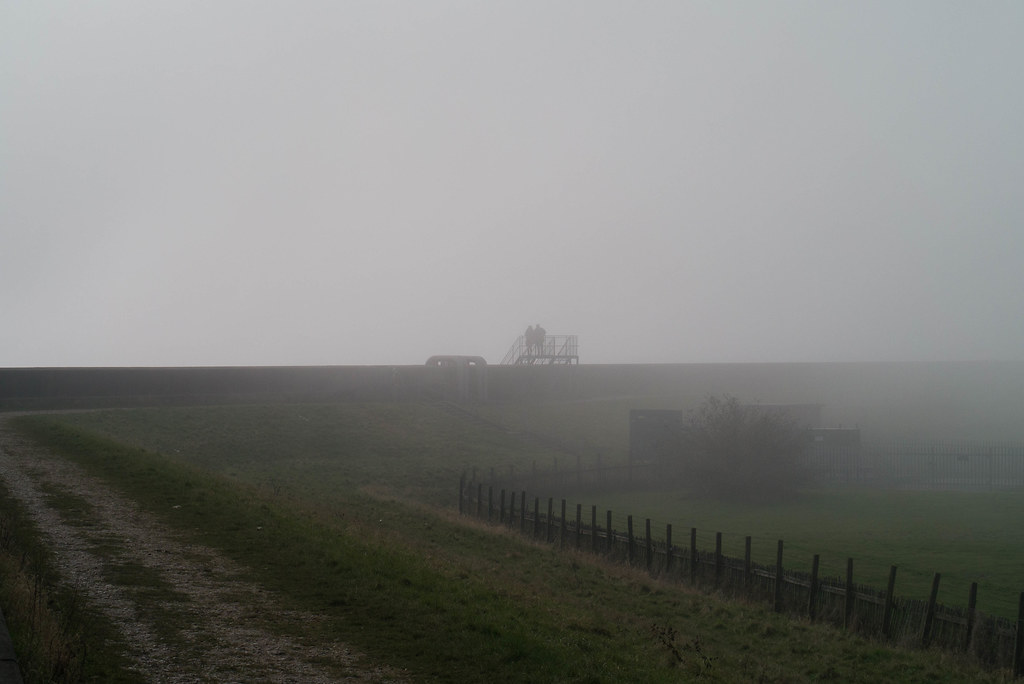Are there any islands below sea level? The question seemed absurd on its surface when I noticed it lodged in my web logs in the form of a search engine query. However I’ve learned to not be so dismissive. I’ve uncovered increasingly obscure artifacts and encountered surprisingly unusual situations in the years I’ve written Twelve Mile Circle. If someone asked me the question directly I’d probably respond with a clarifying question before exploring an answer. “Are we talking about oceanic islands or islands in general?“
Oceanic
The idea of an oceanic island totally below sea level defies logic. An island upon the open sea but situated below sea level would be — by definition — below the sea. It’s not an island. It’s part of the seabed floor even though it may rise very, very close to the surface. It may even pop into view briefly. Maybe the winds push waves in a certain manner or the tides are particularly strong. We’ve probably all seen shoals or sandbars that become visible from time-to-time. Even so I wouldn’t consider them “islands below sea level.”
Atolls

Atolls provide an interesting situation. A coral reef forms around an island that later sinks below the surface. This leaves behind that classic ring enclosing a lagoon, the epitome of tropical paradise. Bikini Atoll in the Marshall Islands offers a great example (map). One sometimes sees references to the underpinning of an atoll’s lagoon as an island below sea level. I think of the atoll itself as the island proper. The rest of it is a lot of former island.
Portions of Islands
It is possible that part of an oceanic island can dip below sea level. Of course, and Hispaniola provides an excellent example.

Lago Enriquillo (map) in the Dominican Republic scores high on a number of superlatives: it’s the largest lake and the lowest elevation in the Caribbean. Its shoreline also forms the lowest dry land found on an oceanic island anywhere on the planet. The land here dips down to 39 meters (128 feet) below sea level.
If that weren’t enough, its infested with saltwater crocodiles. That has nothing to do with today’s topic but I thought it was fascinating and I’m including it anyway. Wikipedia has a great page about this location if you’d like to know more.
Nonetheless, Hispaniola overall is not an island below sea level. Only a small portion of it meets that definition and even then it’s a complete anomaly.
Enduring Myths
There seems to be an enduring urban legend or myth focused mainly in the Caribbean. I kept encountering it as I poked around the Intertubes looking for examples and explanations. Some people believe, and with very firm convictions from what I could tell, that at least a handful of Caribbean islands are below sea level. It has become conventional wisdom in some corners of the basin.
I saw various attempts to explain and dispel this erroneous conclusion. A low slung boat a few miles out to sea would be bobbing along the waves’ troughs and crests. The curvature of the earth might even affect the line of site. It could appear to a casual fisherman that he’s actually looking “down” at an island from his distant vantage point under the right circumstances. It would be an optical illusion but apparently one that’s convincing enough to spawn a myth.
Inland Islands
Plenty of islands don’t sit in the middle of an ocean or a sea. They spread along the abundant lakes, ponds and rivers of our world. Just as there are plenty of patches of dry land found below sea level, there are also bodies of water that collect within them and some happen to have islands.
Back to Lago Enriquillo
Lago Enriquillo, mentioned above, provides an excellent case study. It contains three islands that poke just above its surface: Isla Barbarita, Islita, and Isla Cabritos. I examined a number of geo-tagged images on photo sharing websites. These little interior islets all seemed to have maximum elevations that are safely below sea level.
Some More

I found several other instances of islands below sea level, whether naturally occurring or affected by the interference of mankind:
- Bethel Island is a significantly populated place in the California’s Sacramento-San Joaquin River Delta (map). Most of its 3,500 acres are below sea level with levees protecting 3,700 residents when the river runs high.
- Canvey Island sits on reclaimed land in England’s Thames estuary, separated by water from the rest of Essex and protected by 15 miles of seawall (map). Nearly 40,000 people live here quite nicely in spite of frequent flooding.
- The Caspian Sea is 28 meters below sea level with at least 26 islands including some that are significant in size, e.g., Ogurja Ada (map).
- The Netherlands is famous for its reclaimed land. It has huge swaths located below sea level behind an elaborate system of dikes. There are many, many instances of islands below sea level there.
- I guess technically some might consider parts of New Orleans as islands below sea level too. Unfortunately, that was all too apparent in the aftermath of Hurricane Katrina. I’ve been to New Orleans dozens of times over the years and I have a hard time conceptualizing the city as an “island”. However, water surrounds it on all sides (albeit only narrow drainage canals in some instances).
So let’s go back to the original question. Yes, there are instances of islands below sea level, just not the ones found on the open ocean. Well, assuming one doesn’t believe in Atlantis which is a completely different issue.

Leave a Reply